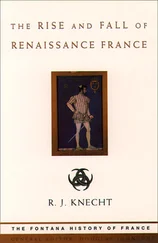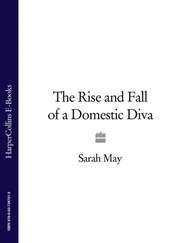The Spanish Empire’s army probably provides the best example of the ‘military revolution’ in action. As its historian notes, ‘there is no evidence that any one state fielded more than 30,000 effectives’ in the Franco-Spanish struggle for Italy before 1529; but:
In 1536–7 the Emperor Charles V mobilized 60,000 men in Lombardy alone for the defence of his recent conquest, Milan, and for the invasion of French Provence. In 1552, assailed on all fronts at once – in Italy, Germany, the Netherlands and Spain, in the Atlantic and the Mediterranean – Charles V raised 109,000 men in Germany and the Netherlands, 24,000 more in Lombardy and yet more in Sicily, Naples and Spain. The emperor must have had at his command, and therefore at his cost, about 150,000 men. The upward trend continued. In 1574 the Spanish Army of Flanders alone numbered 86,000 men, while only half a century later Philip IV could proudly proclaim that the armed forces at his command in 1625 amounted to no less than 300,000 men. In all these armies the real increase in numbers took place among the infantry, especially among the pikemen. 22
What was happening on land was to a large extent paralleled at sea. The expansion in maritime (especially transoceanic) commerce, the rivalries among the contending fleets in the Channel, the Indian Ocean, or off the Spanish Main, the threats posed by the Barbary corsairs and the Ottoman galley fleets, all interacted with the new technology of shipbuilding to make vessels bigger and much better armed. In those days there was no strict division between a warship and a merchantman; virtually all fair-sized trading vessels would carry guns, in order to beat off pirates and other predators. But there was a trend toward the creation of royal navies, so that the monarch would at least possess a number of regular warships to form the core around which a great fleet of armed merchantmen, galleasses, and pinnaces could gather in time of war. Henry VIII of England gave considerable support to this scheme, whereas Charles V tended to commandeer the privately owned galleons and galleys of his Spanish and Italian possessions rather than to build his own navy. Philip II, under far heavier pressure in the Mediterranean and then in the Atlantic, could not enjoy that luxury. He had to organize, and pay for, a massive programme of galley construction, in Barcelona, Naples, and Sicily; by 1574 he was supporting a total of 146 galleys, nearly three times the number a dozen years before. 23 The explosion of warfare in the Atlantic during the following decade necessitated an even greater effort there: oceangoing warships were needed to protect the routes to the West Indies and (after Portugal was absorbed in 1580) to the East, to defend the Spanish coastline from English raids, and, ultimately, to convey an invading army to the British Isles. After the Anglo-Spanish peace of 1604, a large fleet was still required by Spain to ward off Dutch attacks on the high seas and to maintain communications with Flanders. And, decade by decade, such warships became heavier-armed and much more expensive.
It was these spiralling costs of war which exposed the real weakness of the Habsburg system. The general inflation, which saw food prices rise fivefold and industrial prices threefold between 1500 and 1630, was a heavy enough blow to government finances; but this was compounded by the doubling and redoubling in the size of armies and navies. In consequence, the Habsburgs were involved in an almost continual struggle for solvency. Following his various campaigns in the 1540s against Algiers, the French, and the German Protestants, Charles V found that his ordinary and extraordinary income could in no way match expenditures, and his revenues were pledged to the bankers for years ahead. Only by the desperate measure of confiscating the treasure from the Indies and seizing all specie in Spain could the monies be found to support the war against the Protestant princes. His 1552 campaign at Metz cost 2.5 million ducats alone – about ten times the emperor’s normal income from the Americas at that time. Not surprisingly, he was driven repeatedly to raise fresh loans, but always on worse terms: as the crown’s credit tumbled, the interest rates charged by the bankers spiralled upward, so that much of the ordinary revenue had to be used simply to pay the interest on past debts. 24 When Charles abdicated, he bequeathed to Philip II an official Spanish debt of some 20 million ducats.
Philip also inherited a state of war with France, but one which was so expensive that in 1557 the Spanish crown had to declare itself bankrupt. At this, great banking houses like the Fuggers were also brought to their knees. It was a poor consolation that France had been forced to admit its own bankruptcy in the same year – the major reason for each side agreeing to negotiate at Cateau-Cambresis in 1559 – for Philip had then immediately to meet the powerful Turkish foe. The twenty-year Mediterranean war, the campaign against the Moriscos of Granada, and then the interconnected military effort in the Netherlands, northern France, and the English Channel drove the crown to search for all possible sources of income. Charles V’s revenues had tripled during his reign, but Philip II’s ‘doubled in the period 1556–73 alone, and more than redoubled by the end of the reign’. 25
His outgoings, however, were far larger. In the Lepanto campaign (1571), it was reckoned that the maintenance of the Christian fleets and soldiers would cost over 4 million ducats annually, although a fair part of this burden was shared by Venice and the papacy. 26 The payments to the Army of Flanders were already enormous by the 1570s, and nearly always overdue: this in turn provoking the revolts of the troops, particularly after Philip’s 1575 suspension of payments of interest to his Genoese bankers. 27 The much larger flow of income from American mines – around 2 million ducats a year by the 1580s compared with one-tenth of that four decades earlier – rescued the crown’s finances, and credit, temporarily; but the armada of 1588 cost 10 million ducats and its sad fate represented a financial as well as naval disaster. By 1596, after floating loans at an epic rate, Philip again defaulted. At his death two years later his debts totalled the enormous sum of 100 million ducats, and interest payments on this sum equalled about two-thirds of all revenues. 28 Although peace with France and England soon followed, the war against the Dutch ground away until the truce of 1609, which itself had been precipitated by Spanish army mutinies and a further bankruptcy in 1607.
During the few years of peace which followed, there was no substantial reduction in Spanish governmental expenditures. Quite apart from the massive interest payments, there was still tension in the Mediterranean (necessitating a grandiose scheme for constructing coastal fortifications), and the far-flung Spanish Empire was still subject to the depredations of privateers (necessitating considerable defence outlays in the Philippines and the Caribbean as well as on the high seas fleet). 29 The state of armed truce in Europe which existed after 1610 hardly suggested to Spain’s proud leaders that they could reduce arms expenditures. All that the outbreak of the Thirty Years War in 1618 did, therefore, was to convert a cold war into a hot one, and to produce an increased flow of Spanish troops and money into Flanders and Germany. It is interesting to note that the run of early Habsburg victories in Europe and the successful defence of the Americas in this period largely coincided with – and was aided by – significant increases in bullion deliveries from the New World. But by the same token, the reduction in treasure receipts after 1626, the bankruptcy declaration of the following year, and the stupendous Dutch success in seizing the silver fleet in 1628 (costing Spain and its inhabitants as much as 10 million ducats) caused the war effort to peter out for a while. And despite the alliance with the emperor, there was no way (except under Wallenstein’s brief period of control) that German revenues could make up for this Spanish deficiency.
Читать дальше












